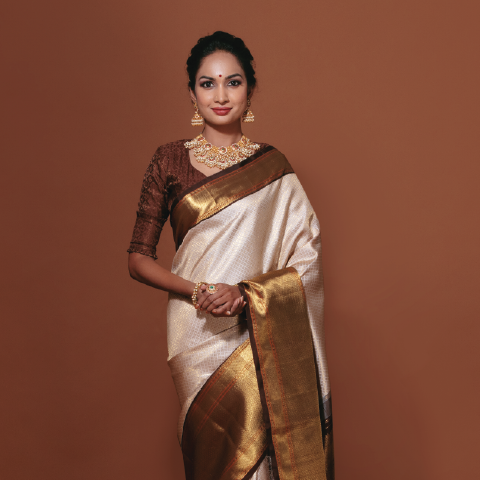India has been a cultural and creative hub long before historians prevailed. Amongst her repertoire of diverse art and craft forms, the most prized possessions include an astounding variety of hand printing techniques that go into creating beautiful patterns on fabric. Today, clusters of villages are sporadically spread across the country, and they act as a portal to travel back in time to the days when the craft of fabric printing sustained the livelihoods of the entire community. If you visit the workshop towns in the states of Madhya Pradesh, Andhra Pradesh and Rajasthan, the most common sight is of rows of houses where fabric printers use hand-carved wooden blocks to stamp yards and yards of cotton cloth, in a continuous cycle. The survival of this trade is dependent on each generation inheriting it from the previous one, and its humble beginning goes back to a minimum of 300 years.
The origin of printing patterns onto fabric is said to have originated in China about 4,500 years ago, but it is in the Indian subcontinent that it reached its peak and flourished. Our craftsmen possessed great knowledge in the usage of natural plant dyes alongside great carving capabilities. Over the years, India cultivated a treasure chest of patterns that were grown from the diversity of the land's cultures and region, plus influence from the various dynasties and countries around the world.

Block prints employ the craftsmen's hand and eye coordination resulting in slight imperfections in the final pattern. This added a human touch to the fabric and become a much-loved trait, to the extent that technologically advanced screen printing machines today are designed to replicate these handmade imperfections.
In this week's blog, we will be browsing through India's catalogue of fabric prints and patterns, and understand what makes each of them so special.
AJRAKH
Look out for: Deep crimson red and indigo blue background with symmetrical patterns and motifs in white.

BAGH
Native to Madhya Pradesh's Bagh district, this block printing technique makes use of bright natural dyes to create geometric patterns inspired by the paintings of Taj Mahal. The hand-printed fabric is then repeatedly washed in the flowing waters of this region, whose chemical properties lend it a long-lasting and lustrous effect.
Look out for: Uniform geometrical and floral patterns in red and black over a white background.

DABU
An ancient block printing technique that originated in the desert lands of Rajasthan's Chittorgarh district, it is differentiated by the usage of mud (specifically black clay or kali mitti) as the resist dye medium. When the fabric is dyed in the indigo bath, the areas where the black clay is applied is blocked out and remains uncoloured. At times, this mud paste can crack and leak which results in a distinctive vein-like effect that resembles Batik. Wooden blocks are then used to create nature-inspired artistic motifs featuring an array of flora and fauna.
Look out for: Natural dye shades like kashish (grey-brown) and indigo (blue) with peacock, mango and sunflower motifs.

SANGANER
A block printing technique that gained popularity during the British era, it is native to Rajasthan, the princely state of the Rajputs. It involves the use of a technique called ‘calico printing’ where the outline of the design is first printed using carved wooden blocks and then filled in with colours. This process is then repeated across the diagonal sections of the fabric to create an array of intricately detailed floral and geometric patterns. When the fabric is printed on either side, it is referred to as “doo-rookhi”.
Look out for: Off-white or pure white background with vibrant floral patterns and geometric designs.

Immense creativity, craftsmanship and effort are required to keep these beautifully unique techniques alive. And through our blogs, we wish to spread awareness and appreciation for our traditional craft forms and carry forth their legacy for centuries to come. You can also explore our handcrafted collections that employ these indigenous fhand techniques here. Watch out for this space as we explore the many prized prints and patterns of our country.






